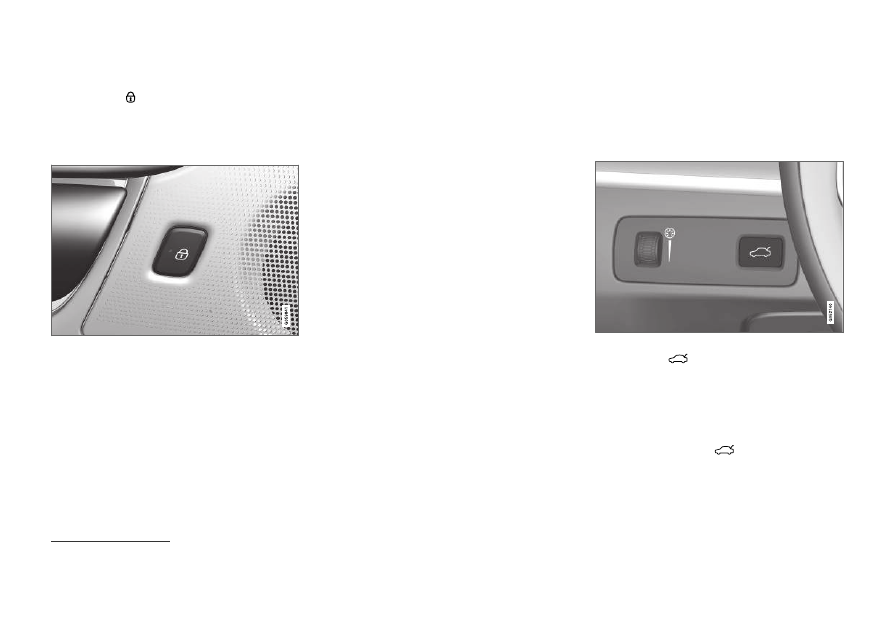Volvo S90 (2019 year). Instruction - part 15

KEY, LOCKS AND ALARM
}}
* Option/accessory.
257
Locking using the front door buttons
–
Press the
button (both front doors must
be closed).
> All doors and the trunk lid will lock.
Locking using the rear door button*
Button with indicator light for locking/unlocking in rear
door.
The lock buttons in the rear doors only lock/
unlock that particular door.
Unlocking the rear door
1. Pull the opening handle to unlock the rear
door.
2. Pull the opening handle again to open the
rear door
16
.
Related information
•
Settings for remote and inside door unlock
(p. 241)
•
Unlocking the trunk lid from inside the vehi-
cle (p. 257)
•
Activating and deactivating child safety locks
(p. 259)
•
Opening the trunk lid from inside the trunk
(p. 258)
Unlocking the trunk lid from inside
the vehicle
The trunk lid can be unlocked from the inside
using a button on the dashboard.
1.
Press the
button on the dashboard.
> The trunk lid will unlock and can be
opened from the outside by pressing the
rubberized pressure plate on the handle.
2. With the optional power trunk lid* -
Press and hold the
button on the dash-
board.
> The trunk lid will open.
16
Provided the child safety lock is not activated.